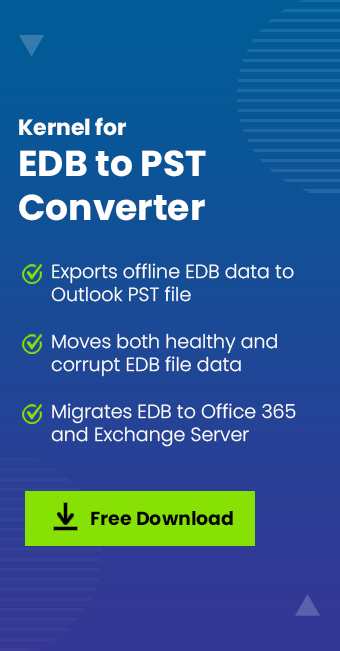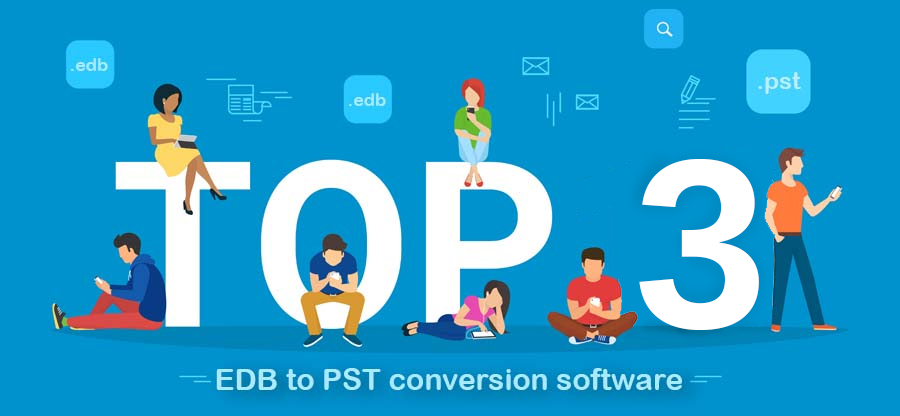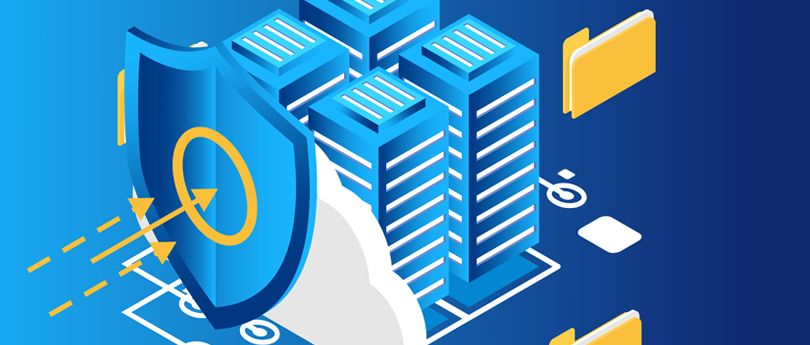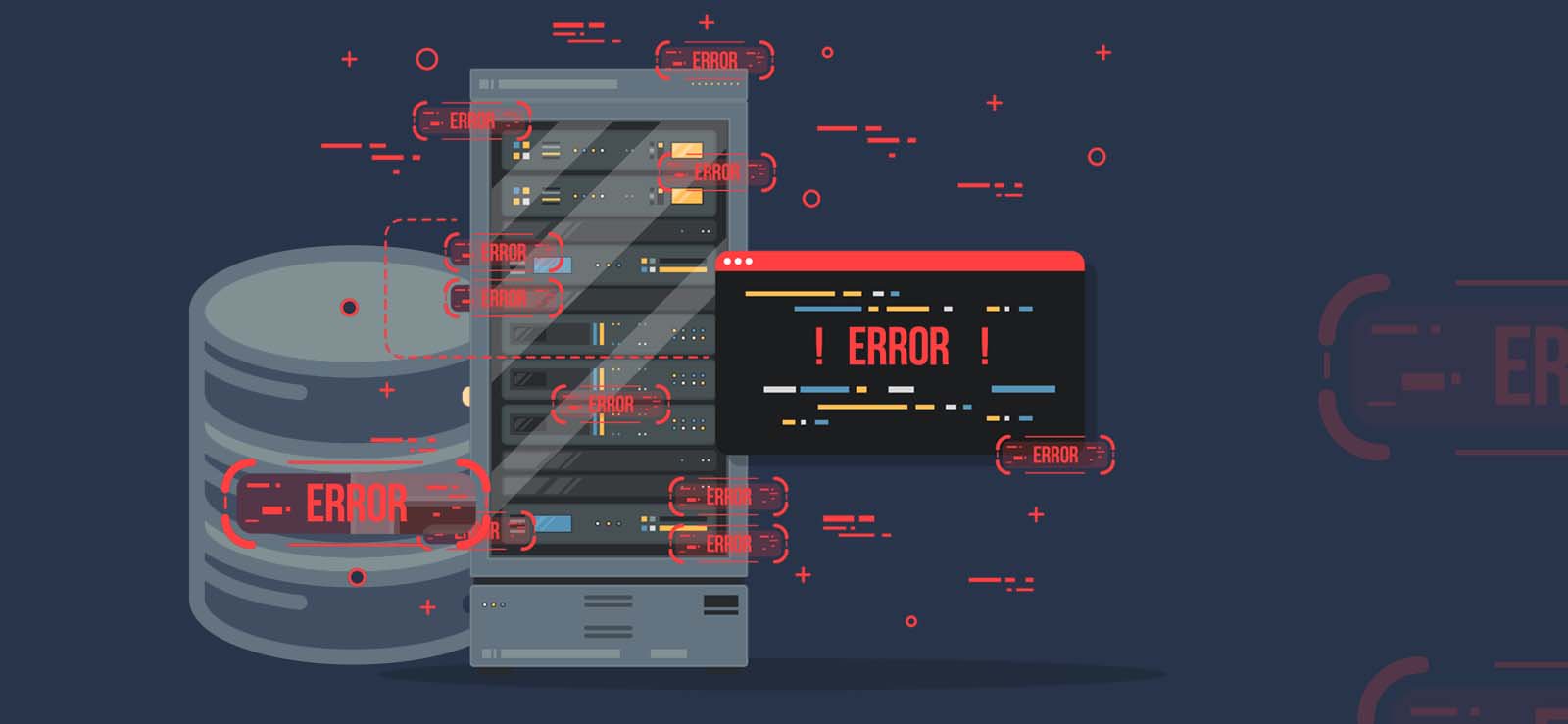Read time 5 minutes
Exchange Server is a productive platform that facilitates email connectivity for organizations. It comprises EDB files or exchange databases containing information like emails, calendars, contacts, tasks, journals, etc. The data is stored in three different file extensions, Pub.edb, Priv.edb., and .stm (depending on the Exchange version). However, there are many instances in which Exchange EDB files get corrupt due to some database header file errors or JET engine errors. That’s why organizations or individuals prefer to back up their EDB files to other file formats in such cases.
Why export EDB to PDF file preferably?
PDF files are a protective document format that keeps the data intact while restricting the ability to edit. If protected with a secure password, it cannot be altered or modified by any users. PDF files are widely used by enterprises for easy documentation purposes, business usage, etc. It offers a secure way to store your data. Converting EDB to PDF becomes crucial due to several concerning reasons and we will learn about that in further section.
Reasons to convert EDB to PDF
Exporting EDB file to PDF format is an organization’s usual task as PDF format makes it easier to collab. There are no specific reasons to convert EDB to PDF, but individuals do it for a variety of reasons, such as:
- PDF is an open-source file format that eliminates the dependence on any exclusive mail formats.
- PDF also supports platform independence allowing you to observe it on any system.
- Allows easy access to emails with a PDF reader on any system, even if the Exchange Server is not installed.
Here, we have discussed the reasons why you should convert EDB to PDF. But the question is how can you convert EDB to PDF format with no direct methods available? Let’s look at the methods that you can use to convert EDB files to PDF format.
Manual method to convert EDB to PDF quickly
Due to the unavailability of direct methods for EDBF to PDF conversion, individuals choose an unusual way to convert their EDB files. This method requires MS Outlook and Acrobat add-in in your system. Users have to access their EDB mailboxes on their Outlook application.
Note: Make sure you have MS Outlook and Adobe Acrobat installed on your system for this method.
- Launch Microsoft Outlook on your system and log in with your credentials.
- Go to the File menu and select Options.

- In the Options section, click on the Add-ins option.
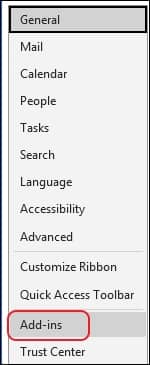
- Now, scroll to the bottom of the page and find Manage and from the drop-down select Com Add-ins option.
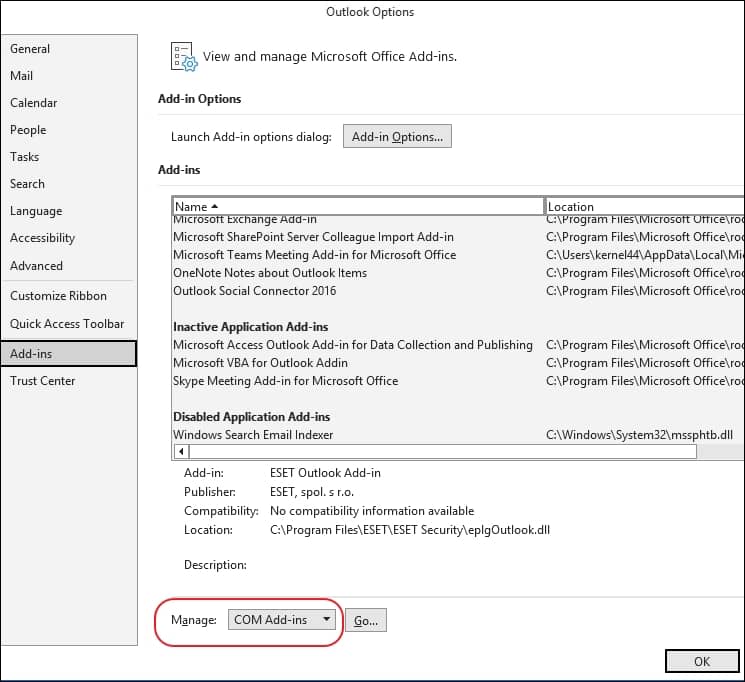
- Click on the Go button to go to the Add-ins section.
- A Com Add-ins window appears on your screen, select the Acrobat PDFMaker add-in from the list and click Ok.
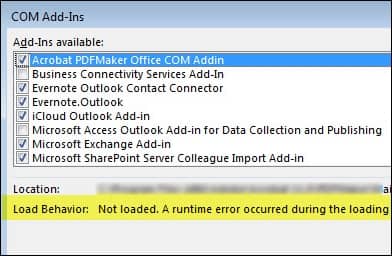
After enabling the add-in, return to the messages, pick messages or folders, and convert them into PDF. This method might sound easy and straightforward, but there are many flaws such as Outlook version or add-ins configurations that can make the process complicated.
Restrictions with manual method
The manual method comes with various restrictions and flaws that often become an obstacle in converting EDB to PDF format, such as:
- It takes longer than usual as you need to configure the Exchange account with Outlook and then enable the add-in.
- Users face complexity in executing steps, as some don’t understand how to select and convert messages.
- The add-in often stop working automatically due to errors in the background.
- There are high chances of data loss, failure, which cannot be ruled out.
- There is no hundred percent reliability of efficient conversion.
In case if you’re unable to convert your EDF files to PDF with the above method, you can opt for an alternative solution.
Automated method to convert EDB to PDF
Kernel for Exchange Server Recovery is an extensive utility that allows you to recover your EDB files from corruption and migrate data to multiple platforms and formats. It is widely used by Exchange administrators all around the world. The tool is designed and upgraded with standard algorithms to restore deleted data and convert it to multiple formats based on user requirements. It offers plenty of features for users to help them reuse their EDB data.
Some offered features that makes the tool stand out:
- Convert all your EDB file data to PDF format quickly within a few steps.
- Migrate offline EDB files to Office 365, live Exchange, and Outlook profiles.
- Comes with in-built backup extractors to retrieve EDB files from NT Backup, VERITAS backups, etc.
- Export specific mailboxes and folders with smart filters while restoring mailboxes from corrupt EDB files.
- Provide a preview facility to help you view data items before converting them to any format.
- Migrates personal mailboxes and public folders quickly.
- Comes with a drag and drop feature to copy mailboxes, extract attachments, and export messages.
- Offers search functionality to help you search specific email messages and attachments from multiple mailboxes.
The tool is widely compatible across all the MS Outlook versions and Exchange Server versions to help you restore and convert data from every EDB file.
Wrap up
Converting EDB file to PDF can be challenging for individuals with the manual approach as mentioned above. But, if it is necessary to convert it for specific reasons, we suggest you use the alternative third-party EDB file to PST file converter. Kernel for EDB to PST converter makes it easy to export your exchange data and provides an efficient method to convert .edb files to PDF format. Also, the software offers a free method to open EDB file without Exchange Server.


